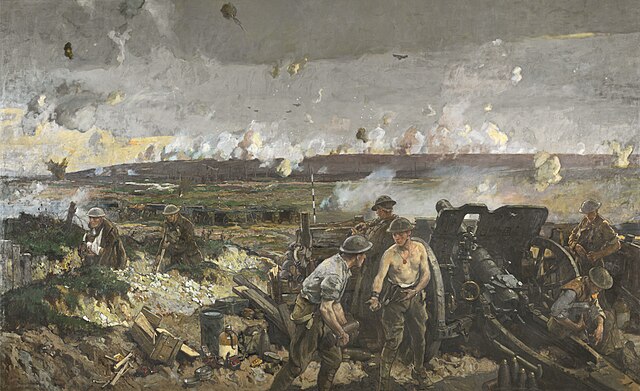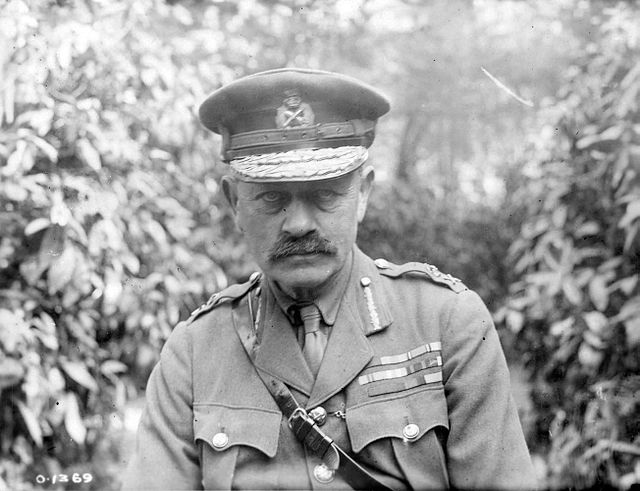The Battle of Vimy Ridge was part of the Battle of Arras, in the Pas-de-Calais department of France, during the First World War. The main combatants were the four divisions of the Canadian Corps in the First Army, against three divisions of the German 6th Army. The battle occurred from 9 to 12 April 1917, marking the commencement of the Battle of Arras and serving as the inaugural assault of the Nivelle Offensive. The objective was to draw German reserves away from the French forces, preparing for a crucial offensive along the Aisne and the Chemin des Dames ridge several days later.
The Battle of Vimy Ridge by Richard Jack
Byng during the battle
The Canadian Corps plan of attack outlining the four coloured objective lines – Black, Red, Blue and Brown
German dispositions at Vimy Ridge on the first day of the battle[image reference needed]
The Battle of Arras was a British offensive on the Western Front during the First World War. From 9 April to 16 May 1917, British troops attacked German defences near the French city of Arras on the Western Front. The British achieved the longest advance since trench warfare had begun, surpassing the record set by the French Sixth Army on 1 July 1916. The British advance slowed in the next few days and the German defence recovered. The battle became a costly stalemate for both sides and by the end of the battle, the British Third Army and the First Army had suffered about 160,000 casualties and the German 6th Army about 125,000.
The town square, Arras, February 1919
Troops of the 10th Battalion, Royal Fusiliers at Wagonlieu, 8 April 1917
Exit from the Allied military tunnels in the Carrière Wellington
British machine gunners fire on German aircraft near Arras




![German dispositions at Vimy Ridge on the first day of the battle[image reference needed]](https://upload.wikimedia.org/wikipedia/commons/thumb/5/5d/GermanDispositionsatVimy9April1917.jpg/640px-GermanDispositionsatVimy9April1917.jpg)



